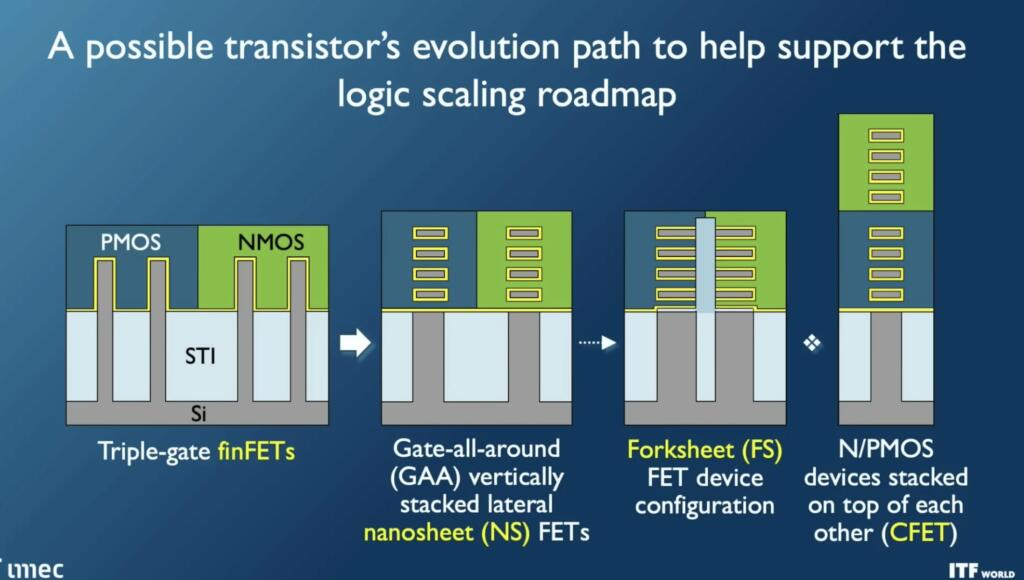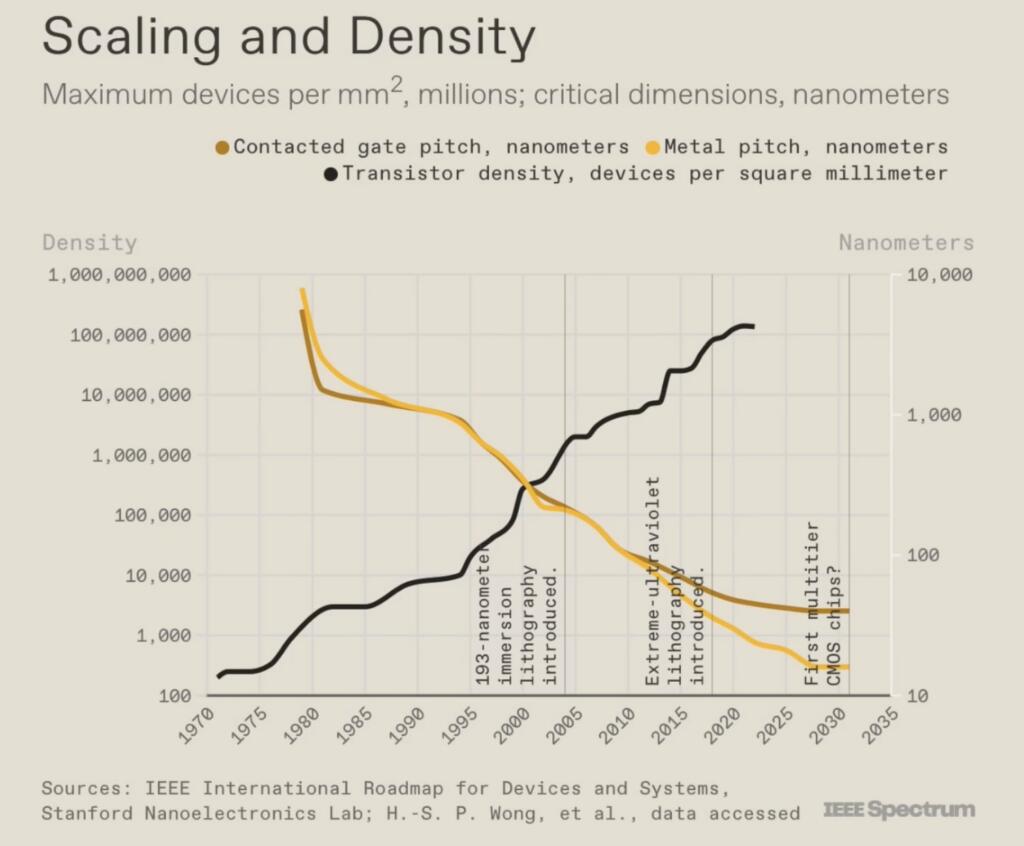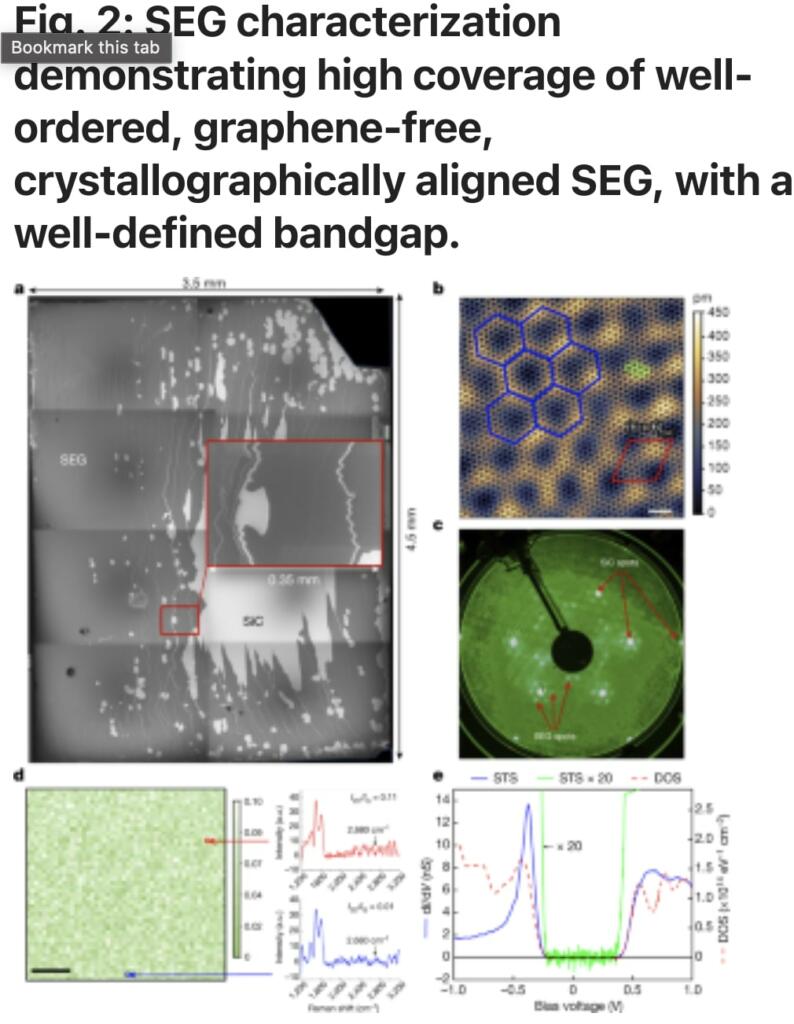Researchers claims to have developed a method for producing a layer of graphene on a silicon carbide (SiC) wafer to form a semiconductor with a band gap of 0.6 eV and with room temperature electron mobility 10-20 times larger than other 2D semiconductors.
They used a quasi-equilibrium annealing method to produces high-quality semiconducting epigraphene (SEG) on an underlying SiC substrate.
When heated, carbon atoms are transported from the carbon surface to the silicon surface to form a buffer layer chemically bonded to the SiC. It should be possible to produce wafer-scale single-crystal SEG.
Graphene can also be used in components that operate in the terahertz part of the electromagnetic spectrum. Terahertz frequencies can be suggested for use in communications like future 6G systems.
The lead researchers do not believe there are major hurdles to producing it on the 1 inch wafer scale. Normal mass produced chips use 12 inch wafers for about 150 times the volume.

The SiC (silicon Carbide) wafer market was valued at $0.64 billion in 2023. The global Silicon Wafer market was valued at US$ 17.3 billion in 2022. The regular silicon wafer market is expected to be about $22 billion in 2029. Graphene over silicon carbide will be a niche of a niche for the chip industry. It will take time to perfect and productionize the process.




The global SiC market is expected to be worth $1.8 billion in 2023 and $11.1 billion by 2028. The top five players in the global SiC wafer market include Wolfspeed, Coherent, ROHM Group (SiCrystal), TankeBlue, and SICC. North America is the largest market for SiC wafers, with about 46% of the market. Asia-Pacific and Europe each have a 27% and 26% share, respectively. The worldwide SiC wafer market is made up of the following application categories: power devices, electronics & optoelectronics, and others. There are commercialized 8 inch silicon carbide wafers.
Nature – Ultrahigh-mobility semiconducting epitaxial graphene on silicon carbide
Semiconducting graphene plays an important part in graphene nanoelectronics because of the lack of an intrinsic bandgap in graphene. In the past two decades, attempts to modify the bandgap either by quantum confinement or by chemical functionalization failed to produce viable semiconducting graphene. Georgia Institute of Technology and other researchers demonstrated that semiconducting epigraphene (SEG) on single-crystal silicon carbide substrates has a band gap of 0.6 eV and room temperature mobilities exceeding 5,000 cm2 V−1 s−1, which is 10 times larger than that of silicon and 20 times larger than that of the other two-dimensional semiconductors. It is well known that when silicon evaporates from silicon carbide crystal surfaces, the carbon-rich surface crystallizes to produce graphene multilayers. The first graphitic layer to form on the silicon-terminated face of SiC is an insulating epigraphene layer that is partially covalently bonded to the SiC surface. Spectroscopic measurements of this buffer layer demonstrated semiconducting signatures, but the mobilities of this layer were limited because of disorder. They demonstrate a quasi-equilibrium annealing method that produces SEG (that is, a well-ordered buffer layer) on macroscopic atomically flat terraces. The SEG lattice is aligned with the SiC substrate. It is chemically, mechanically and thermally robust and can be patterned and seamlessly connected to semimetallic epigraphene using conventional semiconductor fabrication techniques. These essential properties make SEG suitable for nanoelectronics.

Brian Wang is a Futurist Thought Leader and a popular Science blogger with 1 million readers per month. His blog Nextbigfuture.com is ranked #1 Science News Blog. It covers many disruptive technology and trends including Space, Robotics, Artificial Intelligence, Medicine, Anti-aging Biotechnology, and Nanotechnology.
Known for identifying cutting edge technologies, he is currently a Co-Founder of a startup and fundraiser for high potential early-stage companies. He is the Head of Research for Allocations for deep technology investments and an Angel Investor at Space Angels.
A frequent speaker at corporations, he has been a TEDx speaker, a Singularity University speaker and guest at numerous interviews for radio and podcasts. He is open to public speaking and advising engagements.


For this technology to make it to the market, it first has to prove it’s commercially viable. That’s a double edge sword. The history of technology development has shown us many VERY cool technologies never saw the light of day (as actual products). Why? To name a few reasons, certain “groundbreaking” technology did not easily intragate with current technology (translation: It did not play well with others). This point is so very important. New technologies need to mesh themselves seamlessly with what we have. Radical “game changers” that actually effect our lives come along very rarely. (That’s why we call them “game changers”)
And as important, new technology can’t cost much more then the current way we’re doing things. As a former business founder, who had an outside investor, I know they hate “unknown variables”. Introducing new technology to people who honestly don’t understand (fully) how the current technology works is one hell of a hard sell. Hey, it’s their money. I needed to convince them “invest this much now, and according to sales projections, including secured orders, this will be the return in 1year”.
I was so off in my projections. We made more money then God. (not that God needs money…but I like it, so did my investors…) My point? Success in introducing new technology, however “cool, and better” into the consumer “food chain” just does not happen very often. I hope the inventors of this technology find the right people, w/the cash, to make this idea become a product. I wish everyone the best.
Silicon has 10 years left. So 20 years?
Any idea when it could be available as CPUs for commercial use? 5 years?